Exploring New York’s Industrial Past in "Cathedrals of Industry"
Join photographer Michael L. Horowitz for a journey through 50 years of photographs!


It was a wonderful way to start a Friday work day at the Economic Development Corporation. We left the office before 9:00 a.m. and headed to Brooklyn. As part of a summer series, employees at the Economic Development Corporation have the opportunity to attend a number of tours for projects we are involved in at specific sites we manage for the city.
For those unfamiliar with the Economic Development Corporation, we are a nonprofit company that works on behalf of New York City to make sure the city stays competitive for businesses to locate and grow. While mostly known in the news for unpopular projects, like Atlantics Yards in Prospect Heights, today we learned about a section of our company that has helped New York’s waterfront and tourism industries.
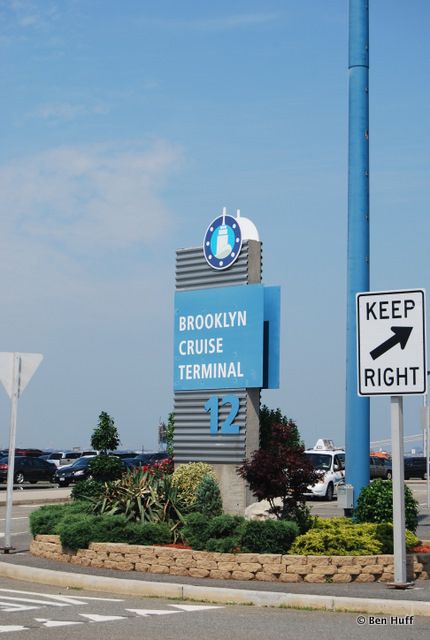
Our destination for the day was the Brooklyn Cruise Terminal. This terminal, located in Red Hook, is located on Pier 12 in the Atlantic Basin dock on an area of the harbor known as the Buttermilk channel. This channel is the narrow area of water that separates Brooklyn from Governor’s Island.
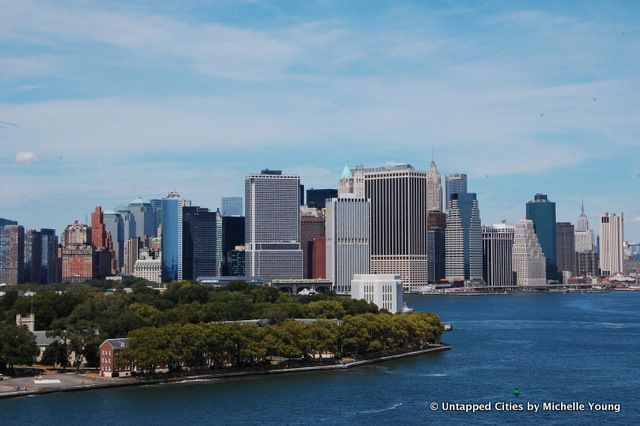
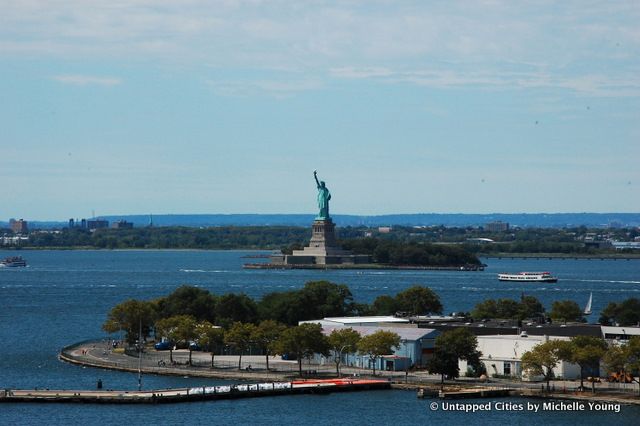
Atlantic Basin was built in in the 1840s.The pier facility became the leading importer of cocoa for chocolate makers. The cocoa would arrive by sail and be unloaded to be transported to local factories. Recently, Mast Brothers Chocolate of Brooklyn just historically recreated this by using a sail ship to bring back cocoa from the Dominican Republic. More info about this can be found on their website (and for those that haven’t heard of them yet, you need to get on this frighteningly delicious Brooklyn-made delicacy!!!)
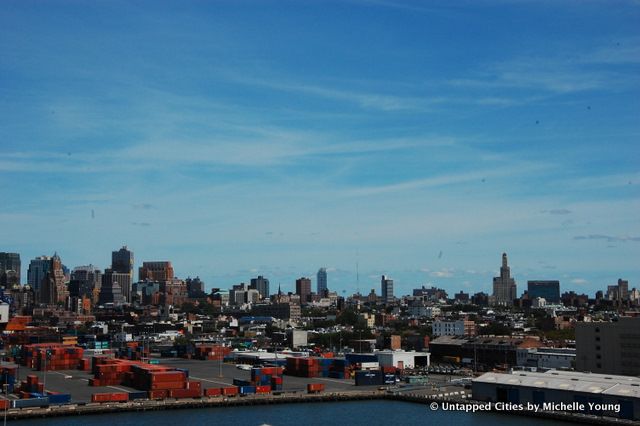
In 1910 the modern shape of the pier and dockyards was built as the Atlantic Basin Iron Works facility. This facility produced oil-fired boilers, diesel engines, and refrigeration units. During World War II the facility helped the effort by turning into a shipyard that focused on conversions and repairs. The owner of the complex was Bernard A Moran, who was a very anti-union labor head. A TIME article from 1943 discussed an argument that Moran had with the War Labor Board. When asked by the WLB, “You believe in umpires, don’t you? Suppose we didn’t have umpires?” Replied undaunted Shipbuilder Moran: “Brooklyn would always win.” What a perfect quote, somehow I feel he must be related to Brooklyn Borough President Marty Markowitz.
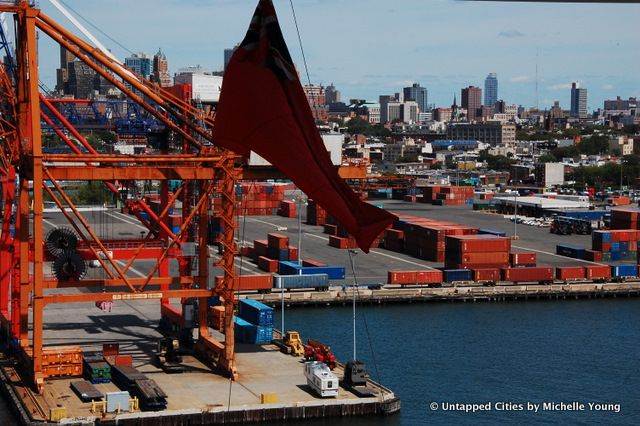
After World War II the area became part of the industrial waterfront, enhancing New York’s ability to handle freight. While the area just adjacent still manages some cargo, this type of delivery became harder in New York when larger more modern facilities were built in New Jersey. The Brooklyn waterfront area fell into disuse for decades. Still able to berth large ships, the pier’s revitalization became possible in 2005 when the Carnival Company announced that its Cunard and Princess Cruise lines would use these docks to host their ships. At the time the facility was used by the Department of Transportation as a storage shed for salt to use during winter storms. The city had the daunting task of turning the large metal shed in to its current facility, and as our tour showed they certainly succeeded.
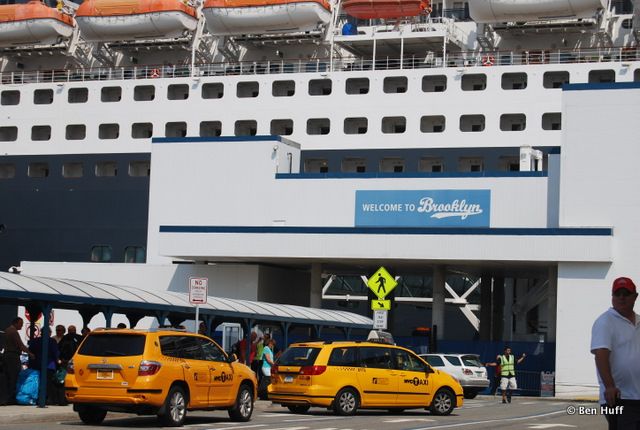
Pier 12 is now the dock of Queen Mary II, one of the largest cruise ships on the sea. Its capacity of 3,000 people means that up to 6,000 people can come in and out of the Cruise Terminal in a day. Visitors and departers will find that the indoors is very similar to an airport, with rows of comfortable chairs in spacious quiet interiors as people wait to get their tickets checked and board. The area is also air conditioned, which is a nice reprieve for the many visitors arriving in during the summer season.
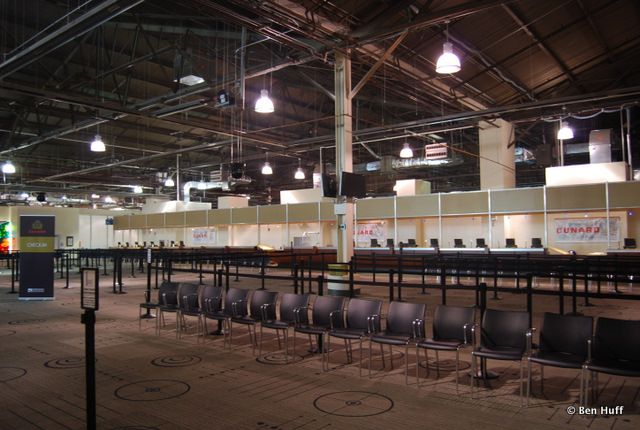
Since The Queen Mary II comes from Southampton, England, people coming through will have to go through customs. This requires the facility to have a strong security presence. After moving beyond the entrance area, I noticed a beautiful mural on the wall, depicting various Brooklyn scenes on glass. I’m unsure of its origin, whether it was made for this facility or salvaged from somewhere, but nonetheless a nice touch for people coming to the facility.
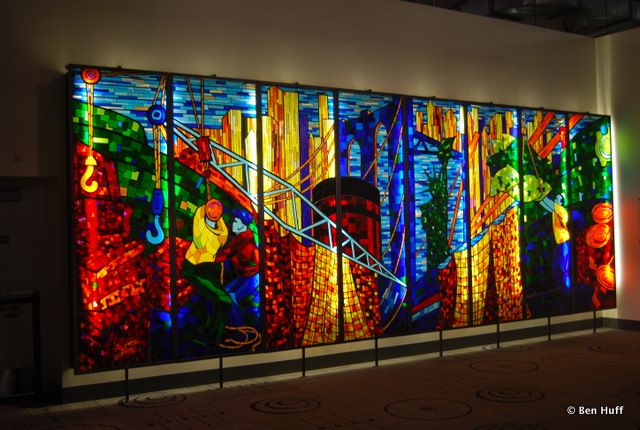
As part of the tour, we went behind the terminal section of the building and into the loading dock in the back. In this area service loaders will reload the Queen Mary II with supplies. When touring this area you can see that the cruise terminal adds more than a few jobs, as it requires plenty of people to supply and load the ship. The cruise ship may take anywhere between 15 to 40 palettes of supplies at a time, which have to be loaded by the service loaders to make sure they are quick. This translates to literally tons of food. Food that is loaded on to the ship comes from well-known grocers in the New York and New Jersey area, and their contents will be examined by the chefs before they are boarded. If a chef doesn’t like the food being offered by the grocers, he will not allow it on the ship and replacement food will need to be found.
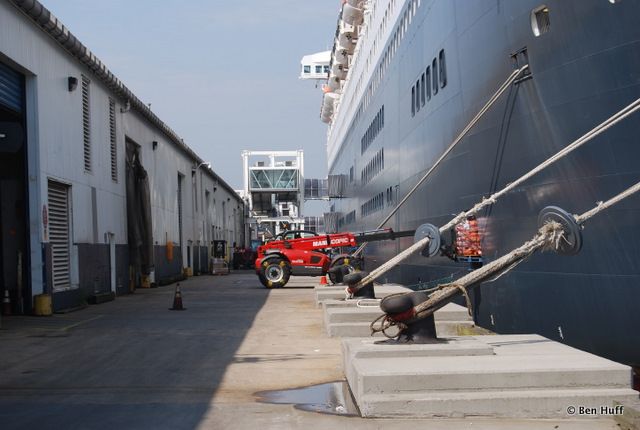
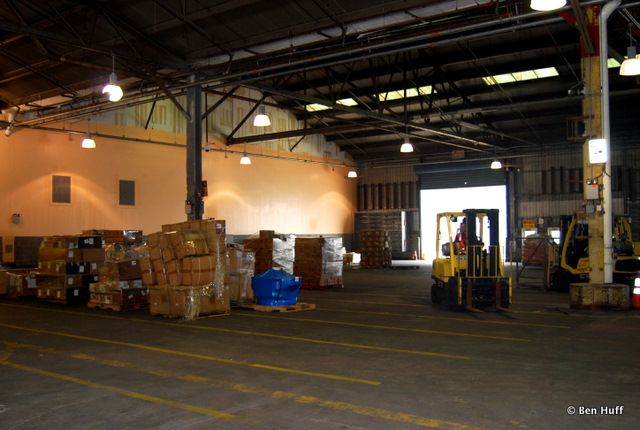
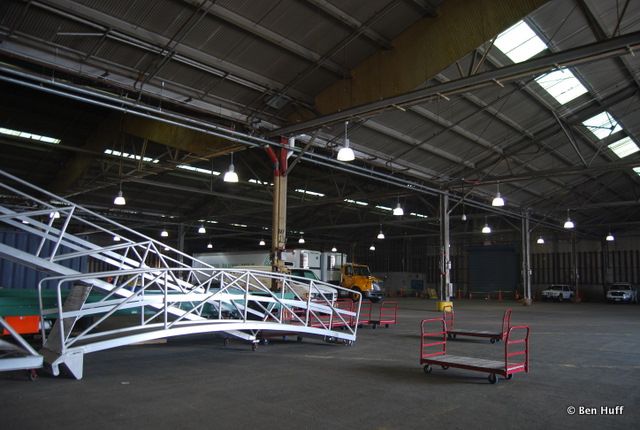
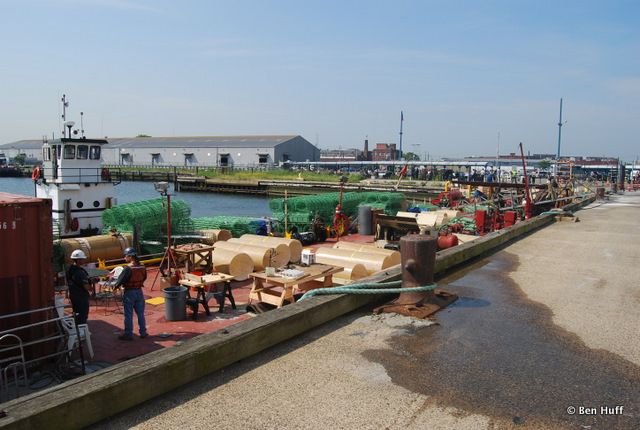
As we were learning about the loading facilities, we were set amidst incredible views of the Queen Mary II, Governor’s Island, downtown Manhattan, and some of the cargo ships that dock at Pier 11 just north of us. It was here that we learned about a project with the City and Cunard to equip the pier with shore power. Currently when the Queen Mary II and other ships come in to New York Harbor they must keep their engines on in order to keep power aboard the ship. Shore power will allow them to turn their engines off while docked, and be more environmentally friendly for the area. These smalls steps are critical for the New York Harbor to become clean once again.
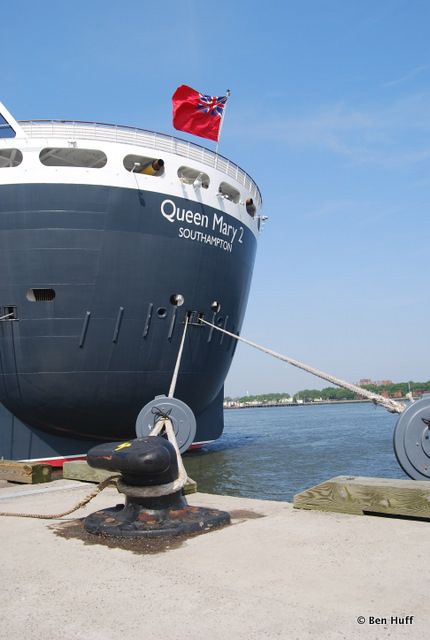
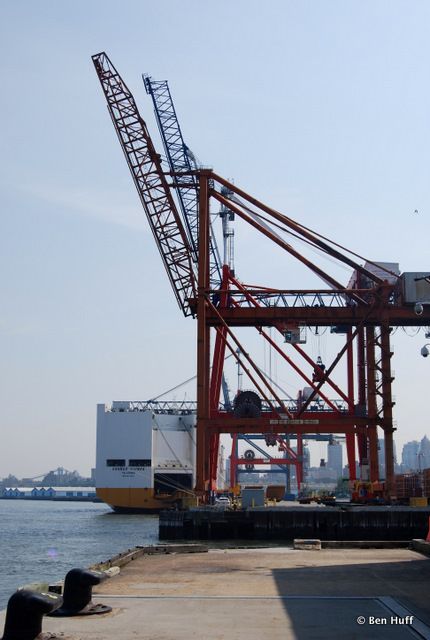
The Cruise Terminal is a quintessential New York Story, once a proud part of maritime industry, the inevitable fall in to disrepair, and then eventually return repurposed as a cruise terminal. Looking around the site you could see many areas of waterfront that were all coming back to life, Governor’s Island becoming a park and possibly the future home of NYU, Lower Manhattan where they are fixing up the Battery Marine Building, even the industrial areas around Red Hook where Phoenix Beverages is building a major beer distributing facility. My advice to the readers, get out to the waterfront now, any part of it. Just like a vacant lot in Midtown, the pressure to develop will force the city to find new ways to use the waterfront it has. Not only will you find some of the best views of the city, it is an area that is under constant change.
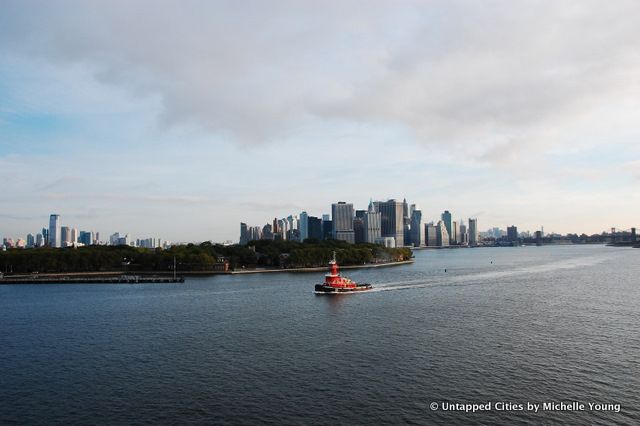
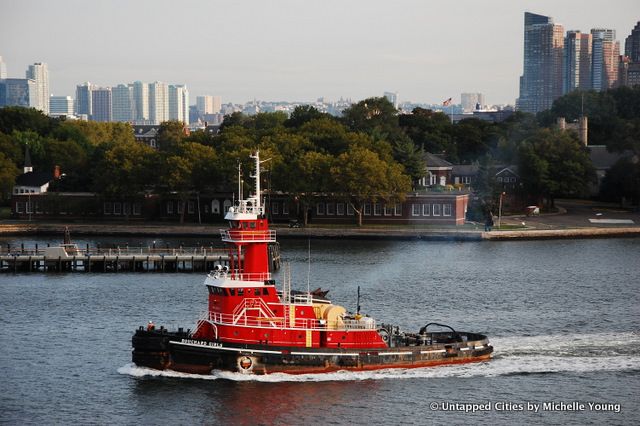
Ben Huff works at the Economic Development Corporation and is also in the graduate program at Columbia University GSAPP for Urban Planning.
Subscribe to our newsletter